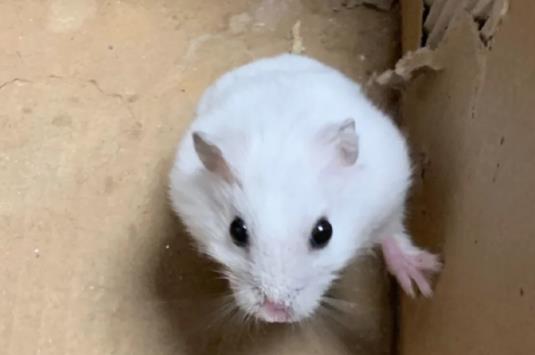Concise Guide to Hamster Health Management
I. 5 Diseases to Be Alert For
Wet Tail (Bacterial Diarrhea)
Typical Symptoms: Matted fur around the tail, foul odor, hunched posture
Golden Treatment Window: Within 24 hours of symptom onset
At-Home Care: Discontinue fresh fruits and vegetables; switch to cooked apple puree + electrolyte water

Respiratory Infection
Warning Signs: "Clicking" sounds while breathing, crusting around the nostrils
Environmental Adjustment: Remove all pine bedding; replace with paper towels/dust-free paper bedding
Malocclusion (Tooth Deformity)
Self-Examination Method: Check if incisors are symmetrical; normal length is approximately 3-5mm
Emergency Care: Provide unbleached cardboard (for emergency teeth grinding)
Skin Issues
Fungal Infection Characteristics: Circular hairless patches with scaly edges
Safe Medication: Diluted povidone-iodine solution (1:10 ratio)
Tumors
High-Risk Breed: Syrian hamsters (males are more prone to mammary tumors)
Surgical Indication: Consider removal if the tumor diameter exceeds 5% of the hamster’s body weight
II. At-Home First Aid Protocols
Dehydration First Aid
Judgment Criterion: Gently lift the skin on the back of the neck; rebound time > 2 seconds
Rehydration Plan: 5% glucose water (1 teaspoon of glucose + 100ml warm water)
Wound Care
Correct Steps: Rinse with normal saline → Apply pet-specific povidone-iodine → Cover with sterile gauze
Absolute Taboo: Do not use human band-aids (adhesives are hazardous)
Hypothermia
Rewarming Method: Wrap a 40℃ warm water bag in a towel; take temperature every 5 minutes
Dangerous Temperature: Seek immediate veterinary care if rectal temperature < 35℃
III. Daily Prevention Key Points
Environmental Control
Ideal Temperature: 20-25℃ (avoid direct air conditioning drafts)
Bedding Selection: Aspen shavings/paper bedding are recommended (pine/cedar is forbidden)
Diet Management
Essential Nutrition: Daily protein requirement (approximately 15-20% for adult hamsters)
Dangerous Food List: Onions, chocolate, citrus fruits, raw beans
Health Monitoring
Weight Recording: Weigh at a fixed time weekly (alert if fluctuation > 10%)
Activity Observation: A 50% reduction in nighttime activity is abnormal
IV. Emergency Situations Requiring Immediate Veterinary Care
Protrusion or inability to close one eye
Sudden hind limb paralysis (possible spinal injury)
Bloody stool or tar-like black stool
Refusal to eat for more than 12 consecutive hours
Special Reminder: Hamsters are crepuscular animals. Abnormal symptoms (such as rapid breathing) while sleeping during the day often indicate a serious condition. It is recommended to contact an exotic pet hospital immediately.
